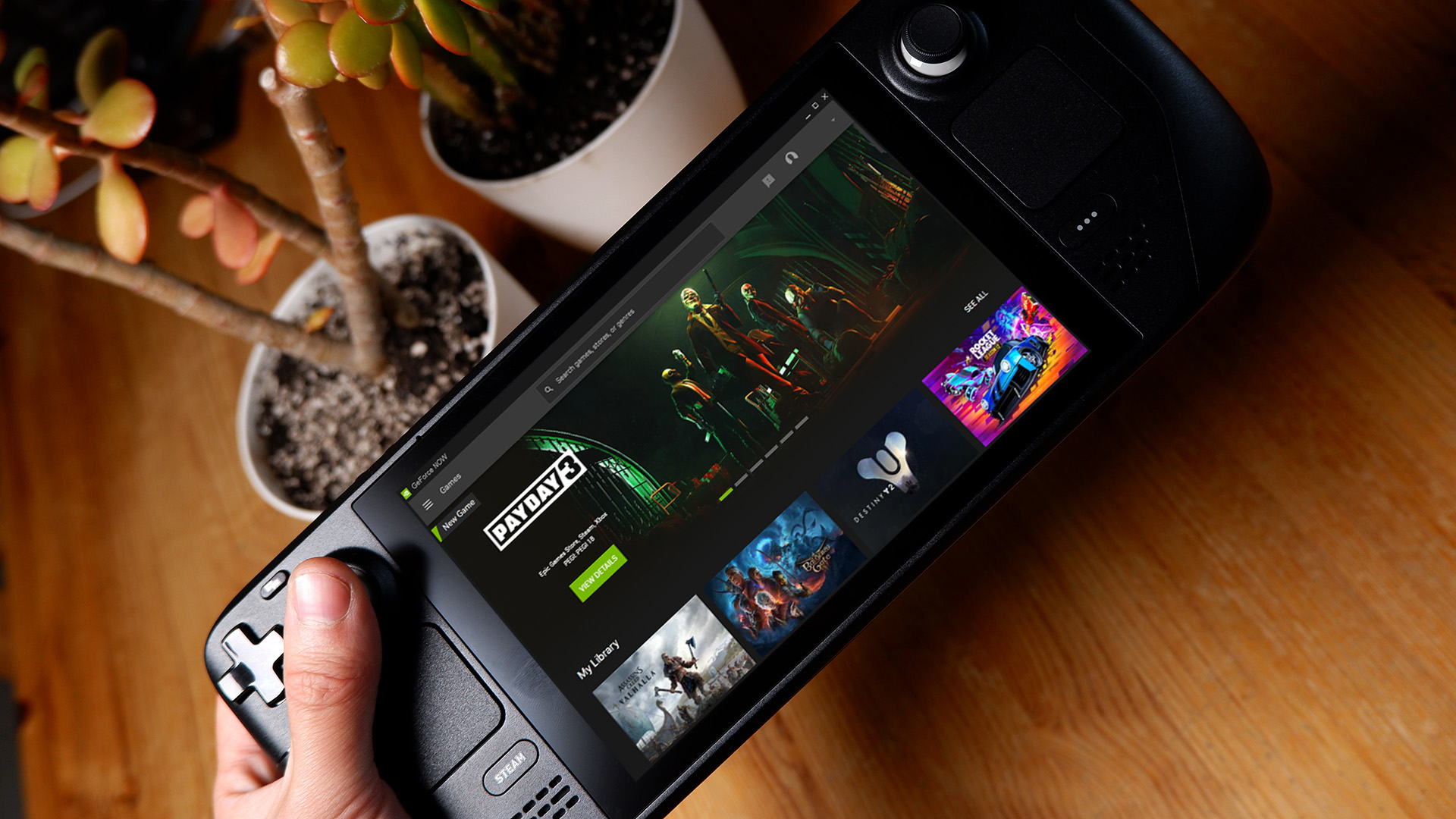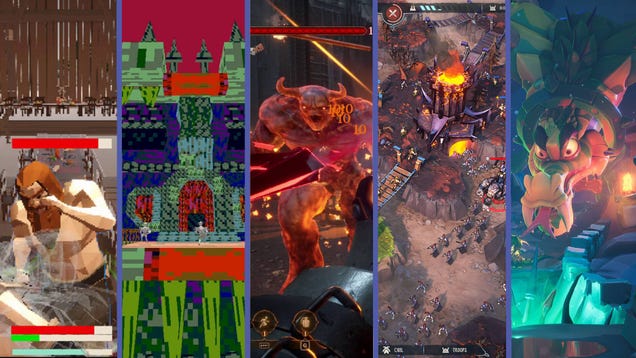
You can jury-rig your own GeForce Now app on Deck, but a native Linux app would be such an easy win.
(Image credit: Future)
This month I’ve been testing: a brand new, and very adorable PC handheld. The Ayaneo Air 1S is compact yet still, almost unbelievably, packs a punch.
This month I have been playing: Baldur’s Gate 3 and Cyberpunk 2077. The new releases keep coming, and I can’t make my mind up which game to focus my attention on.
The Steam Deck has plenty of performance to offer for indie games. Cyberpunk 2077, however, not so much. That’s why I tend to resort to streaming any demanding game from GeForce Now instead of playing it on the Deck’s own AMD chip. It’s a great experience, as it actually extends battery life to stream a game rather than play it natively, though you have to jury-rig the GeForce Now app yourself to get it working properly.
The lack of an official GeForce Now app on the Steam Deck seems like a bit of an oversight. Nvidia’s GFN boss says “use a Chromium browser to make it work,” but that experience isn’t actually as simple or effective as it sounds. Not if you want to play using the Steam Deck’s actual control schemes, not just an awkward mouse cursor.
You have to dive into the Konsole and tweak the code to get the Deck’s controller layouts playing nicely on Chrome. Nvidia has an official guide on how it’s done, but there’s a better way, as laid out by HUM24H on Reddit, that will allow you to launch GeForce Now directly from Steam:
If you don’t have Chrome installed already, switch to Desktop Mode and install it via the Linux StoreOpen the Start menu, then System, and click on KonsoleType in the following command:Chrome: flatpak –user override –filesystem=/run/udev:ro com.google.ChromeGo back to the Steam Deck UI and head to the Chrome launch pageOpen Chrome’s Properties panelChange the name from Chrome to GeForce NowUnder Launch Options, append this text (ensuring to leave a space between the text already in there and the following text:–window-size=1024,640 –force-device-scale-factor=1.25 –device-scale-factor=1.25 –kiosk “https://play.geforcenow.com”Go back to the Chrome page, now called GeForce Now. Click on the controller icon on the right-hand sideChange the Current Layout to ‘Gamepad with Mouse Trackpad’Edit the layout to include Left Click command for the right trackpad clickExit and launch GeForce Now
Once setup, you have a neat GeForce now app on your Deck. It works as intended, and you can even add your own GeForce Now logo as I have to make it look the real deal.
Still, it feels like steps not everyone is going to want to take, and if you’re not already a GeForce Now user you might not even care to find out how it’s done. It feels like a missed opportunity not having an official app ready to go when streaming makes so much sense for a handheld like this.
Valve and Nvidia have said that they would both like to see a native GFN app on the Deck. But these comments were made in January this year, and so far nothing has materialised.
“There is not a native app on Steam deck today,” said Andrew Fear, GFN boss, back in January. “Use a Chromium browser to make it work. I would say that both Nvidia and Valve, I think we’re both interested in making [GeForce Now on Steam Deck] better. But we don’t have any announcements on a native app coming to Steam.”
I’ve been messing around with the Windows-powered Ayaneo Air 1S. This device has full access to GeForce Now without any real tinkering, though it costs a whole lot more than a Steam Deck. (Image credit: Future)
Most other handhelds do have native GFN apps. The reason being they’re either powered by Windows, and have access to the standard application on the OS, or they are Android-powered and can use the GFN Android app. The Steam Deck is the odd one out because it’s powered by Linux, and there’s no native Linux GFN app (there are some unofficial ones).
Maybe that’s the real kicker here: Linux doesn’t have a native GeForce Now app, and in my opinion quite rightfully should. Even MacOS has one. Even MacOS. If you head to the Nvidia forums you’ll find a thread chocked full of Linux users asking, begging in some cases, for a native Linux app.
I guess I’ll join in on the chorus: come on, Nvidia. Give us a native GeForce Now app on Linux. Pretty please.





